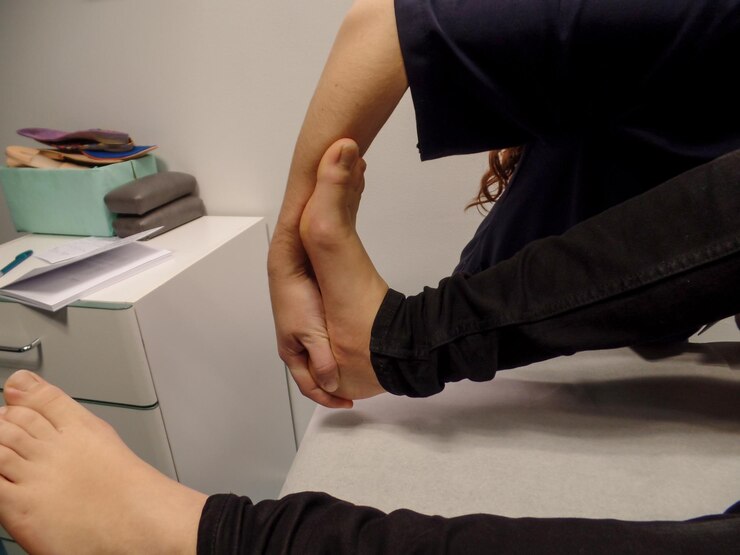Have you ever stubbed your toe so hard you wished you could rewind time? Or maybe endured persistent foot pain that makes even a stroll to the mailbox feel like a marathon? Chances are, my friend, you need a podiatrist in your life!
But wait, what’s a podiatrist, you ask? Well, think of them as superheroes for your feet. These medical marvels specialize in diagnosing and treating all things foot and ankle related, from bunions and blisters to hammertoes and heel spurs.
Why Should You Listen to Me?
Before I dive into the wonderful world of podiatry, let me introduce myself. I’m Emma, and like many of you, I used to think foot problems were just a part of life. That is, until I met my amazing podiatrist, Dr. Amelia . She transformed my once-stubborn feet into happy, healthy hoppers, and I’m thrilled to share her wisdom with you today.
So, what can a podiatrist do for you? Buckle up, because you’re about to discover a treasure trove of foot-fixing magic!
When to Consult a Podiatrist
Don’t wait for your feet to scream for help! A podiatrist can be your preventative partner, helping you avoid future foot woes. But let’s be honest, sometimes foot emergencies happen (hello, rogue pebble!). Here are some red flags that signal it’s time to call your podiatrist:
- Chronic pain: Whether it’s a nagging ache or a shooting sharpie, persistent foot pain deserves professional attention.
- Ingrown toenails: These painful invaders can lead to infections and further discomfort. A podiatrist can expertly remove them and offer tips for prevention.
- Deformities: Bunions, hammertoes, and other foot malformations can affect your mobility and comfort. A podiatrist can recommend treatment options, from specialized footwear to surgery.
- Diabetes: People with diabetes are at higher risk for foot complications. Regular podiatric checkups are crucial for early detection and prevention.
- Sports injuries: Athletes know the agony of foot and ankle injuries. A podiatrist can provide specialized care to get you back in the game faster and stronger.
Common Podiatric Treatments:
Your podiatrist’s toolbox is brimming with solutions for your foot woes. Here’s a sneak peek:
- Orthotics: These custom-made shoe inserts can correct posture, improve gait, and alleviate pain.
- Braces and splints: For sprains, strains, and fractures, these immobilize the foot and ankle to promote healing.
- Minimal invasive procedures: From wart removal to corn and callus treatment, these techniques offer quick and effective solutions.
- Surgery: In rare cases, surgery may be necessary for severe deformities or chronic pain. Don’t worry, though, your podiatrist will discuss all options thoroughly before recommending any surgical intervention.
Real-Life Podiatry Heroes:
Remember Dr. Amelia, my superhero podiatrist? Let me share a heartwarming story of how she saved the day (and my feet!). I used to be a ballet dancer, and one fateful day, I landed wrong during a pirouette and felt a searing pain in my ankle. Tears welled up, my dancing dreams seemingly shattered. But Dr. Amelia came to the rescue! She diagnosed a sprain, expertly treated it with a combination of rest, ice, and compression, and even recommended strengthening exercises to get me back on my toes (literally!). Within weeks, I was twirling and leaping again, my gratitude for podiatry soaring higher than any grand jeté.
Foot-Tastic Tips for Happy, Healthy Feet:
Now that you’re armed with the knowledge of podiatry’s power, let’s keep your feet feeling fabulous! Here are some golden rules:
- Choose the right shoes: Ditch the uncomfortable, trendy footwear for shoes that provide good support and cushioning.
- Wash and moisturize your feet daily: Just like your face, your feet deserve some TLC. Pamper them with a gentle scrub and a hydrating lotion.
- Trim your toenails properly: Avoid ingrown toenails by cutting straight across, not curved. If you’re unsure, seek professional help.
- Stretch and exercise regularly: Keeping your feet and ankles mobile can prevent stiffness and pain.
- Listen to your feet: If something hurts, don’t ignore it! Early intervention is key to preventing bigger problems.
